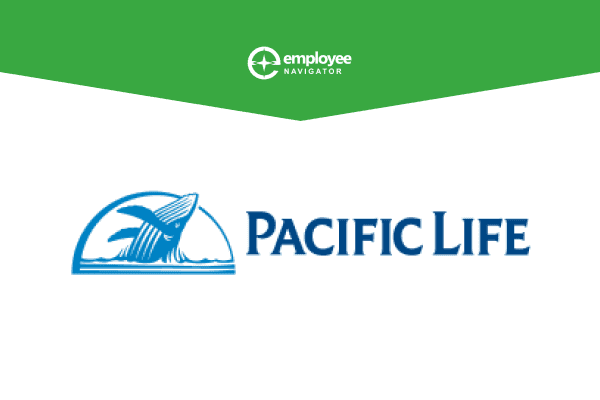
Today marks the one-year anniversary of our acquisition of Ease, and I believe we are making great progress in building confidence and trust of Ease customers in our long-term vision of helping brokers improve their operations, increase retention, and drive revenue growth. We recently finished our busy season which concluded with the ACA reporting deadline. As of the ACA filing deadline, there were no unanswered customer questions despite a 33% increase in the number of companies filing 1095’s between the two platforms. We also recently completed our largest in-person training for Ease users in southern California with over 200 attendees and we are currently planning at least three more in-person trainings in northern California, the Midwest, and possibly Florida in the 2nd quarter. These sessions are great for new Ease users and Employee Navigator customers who are looking to get new staff members trained.
The first phase of our integration plan includes a tool in Ease to provide visibility for brokers of potential data issues to fix before migrating groups to Employee Navigator. We want to provide brokers with plenty of time to fix data issues so the highest quality data can be migrated to Employee Navigator when the migration tool is released. On April 3rd (today) Ease users will see a list of active companies and can deactivate those that are no longer using Ease or have already been migrated manually by a broker to Employee Navigator. Brokers will also see gaps in employee data or wrong values (for example wrong SSNs) likely impacting the data quality being processed by carriers. Finally, we have aggregated the EC+ errors which are visible in other parts of Ease to help simplify the process of resolving errors.
We are also focused on feature parity between the two platforms, and I am sure some of our users will be very happy to see some long-awaited enhancement requests finally implemented on Employee Navigator. As we stated a year ago, we believe the acquisition will greatly benefit the users of both platforms, and our analysis has identified about one hundred new features and enhancements that will be added to Employee Navigator to ensure parity for Ease users.
We have two primary goals for feature parity. First, there are data values which need to be added to Employee Navigator before companies can migrate to ensure continuity of services. Second, there are key features used by Ease brokers that need to be migrated to Employee Navigator. Our goal is to give Ease brokers the confidence to add groups to Employee Navigator by the end of the summer. Many brokers I have spoken with want to start using Employee Navigator for new groups by the end of the summer and plan on migrating existing Ease customers in Q1 2025.
We anticipate releasing a Version 1 (V1) migration tool for beta testing with a small set of brokers in mid-to-late May. Based on the feedback we will announce the general availability date sometime in June. The V1 migration tool will move company, plans, employees, dependents, and enrollments. Some data will not be available to migrate immediately and will require users to make a few manual updates. As part of the migration process, we will provide brokers with a summary of those manual steps. Over time, the migration tool will be expanded and manual steps for brokers reduced. For example, the payroll deduction codes will need to be manually added into Employee Navigator initially, while later upgrades to the migration tool will automatically move them. Don’t worry, the bulk of the data will be moved automatically, you’ll just want to verify certain plan or company settings.
It will be important to have experience with Employee Navigator before using the migration tool. Our recommendation is for brokers to start by adding some new groups to Employee Navigator to gain experience, then begin migrating customers off the Ease platform once they have built some confidence in using Employee Navigator. Our feedback indicated brokers are planning their migration strategy to Employee Navigator on the following factors:
1. Use Version 1 migration tool to take advantage of the Employee Navigator integrations that aren’t available on Ease or if there is an issue with a customer’s integration on Ease.
2. Some brokers rely on operational tools, plan enrollment features or HR features and may want to hold off migrating those select groups until there is feature parity in Employee Navigator.
3. The last phase will include brokers waiting for the most robust migration tool or for a minimally used feature in Ease to be moved to Employee Navigator. For example, there are only about 120 of 70,000 employers using the hearing plan which will be one of the later parity features completed.
In support of this vision, we are currently focused on the “big 4” features that need to be moved to Employee Navigator:
1. Make Ease enrollment forms available in Employee Navigator.
2. Support inviting GA’s and other broker service providers via Teams Invitations.
3. Releasing the APIs to support Agency Management Systems (AMS) so these firms can begin integration efforts with Employee Navigator.
4. Adding support for the small group medical rate libraries for Vericred and GA’s.
Our infrastructure work is well underway for each of these features, and you’ll begin seeing them in the 2nd quarter.
Based on the rapid addition of new features to Employee Navigator, it will be important for all users to subscribe to the product updates. A few larger features that are nearing completion are:
- Custom HRIS fields to collect employee data.
- Minimum hours eligibility for benefits and corresponding employee hours fields.
- Single plan exclusion for an employee.
- A new company summary page for brokers with new tracking fields for a brokers’ account management team.
I also wanted to respond to several questions we have received over the last few months.
Will Employee Navigator automatically migrate your customers?
No, brokers will be in control of which customers are moved to Employee Navigator and when.
Will you continue virtual training on the Employee Navigator system?
Yes, one is scheduled for April, and future dates will be announced.
What are some examples of the differences between Employee Navigator and Ease?
- Dependent life premiums in Employee Navigator show separate employee and dependent costs where Ease just shows a total.
- Ease and Employee Navigator have different rounding for salary-based benefits.
- Employee Navigator has more payroll deduction options.
- Payroll calendars need to be set up in Employee Navigator to improve the accuracy of integrations with payroll companies. Ease only requires payroll calendars to be set up when FSA plans are offered.
- Ease deferred the system of record to the carriers while Employee Navigator is the system of record for benefits and payroll deductions.
Can I have more than two Premier users?
Yes. While we have not finalized our fees, a broker who wants to provide phone access to their whole team will pay about the same as they do now. We expect to have this finalized before the Summer.
Is there an end date when I will lose my free access to Employee Navigator?
We have no plans to end this for active Ease customers.
What are examples of configurations which may need manual intervention during the transition process?
- LTD & STD buyup: Employee Navigator has a single model and Ease uses two plans (these impact ~215 companies).
- Ease has plan vs. company level domestic partner setting.
- Companies using benefit allowance in Ease may want to migrate on renewal.
What are some of your other priorities for 2024?
- Ensuring Employee Navigator is the easiest benefits administration for brokers to work with by adopting some of Ease’s “easy” features.
- Continue to provide the highest quality customer service to our customers.
- Develop the best infrastructure to support our integrated partners.
- Continue adding new integrated partners.
I have also heard some wild rumors over the past three months, none of which are true, including:
- UnitedHealthcare owns a lot of Employee Navigator.
- A marketing email from a competitor suggesting that Ease is being shut down immediately.
- Employee Navigator will begin to charge PEPM fees to brokers.
There are a lot of challenges ahead and we expect to hit some bumps along the way, but with each week we become more excited about the opportunity ahead of us. Please keep the questions coming.
George Reese
CEO
Employee Navigator


